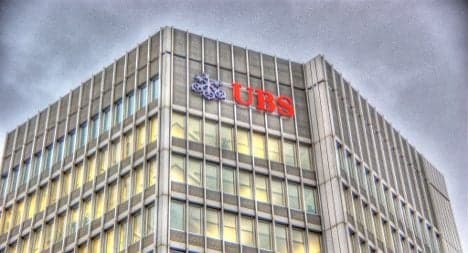UBS shrinks investment bank, halves risky assets

Swiss banking giant UBS said on Thursday it was to dramatically cut back its investment bank arm, reducing its risky assets by half, or 145 billion francs ($159 billion).
"We have chosen to substantially reduce the risk profile of the bank by exiting and downsizing businesses which are not value added (for) our client franchise or deliver unattractive risk-adjusted returns," newly-appointed chief executive Sergio Ermotti said in a statement.
The shake-up comes as the bank, Switzerland's largest, tries to draw a line under a disastrous several years which have seen it battered by the global financial crisis and embroiled in disputes over client secrecy.
The decision follows a review by the board of directors and group executive board as Switzerland's largest bank tries to get back on track in a difficult economic environment overshadowed by the eurozone debt crisis.
Ermotti, 51, was appointed head of UBS on Tuesday after the departure in September of Oswald Grübel in the wake of a massive rogue trading scandal, another blot on the bank's record.
UBS also announced that former Bundesbank president Axel Weber will succeed Kaspar Villiger as board chairman from May 2012, a year earlier than planned.
The investment bank will be "more focused and less complex," UBS said on Thursday, while revealing that the number of people it employs was expected to drop from 18,000 to 16,000 by the end of 2016.
This means 400 to 500 more staff will go on top of the 3,500 cuts announced across the bank in August, a spokesman said.
Among other key announcements were a proposed dividend of 0.10 francs per share for 2011, its first cash dividend since the financial crisis, "and a progressive capital return programme thereafter."
The bank is targetting a common equity Tier 1 capital ratio target of 13 percent -- a measure of its financial strength -- under the new Basel III international financial regulations.
The core Tier 1 target under Basel III is 7.0 percent but larger banks, whose failure would pose a risk to the whole financial system, are expected to increase that to at least 9.0 percent.
"UBS is acting from a position of strength and we are adapting our strategy to deliver more attractive returns to shareholders and to reflect economic and regulatory change," Ermotti said.
"We are confident that we can deliver a return on equity between 12 percent and 17 percent and we are determined to return capital to our shareholders," he said, compared to the previous 15-20 percent for basic profitability.
The new strategy will see the bank exit its asset securitisation business and scale back its long-end interest rate operations.
"In total we expect the revenue impact of exiting and reducing these businesses to be about 500 million Swiss francs," said Ermotti.
While addressing an investors' day in New York on the strategy changes, the chief executive also sought to reassure customers and clients over the recent $2.3 billion rogue trading scandal.
"We are committed to addressing the causes of the incident and disciplining those who are ultimately deemed responsible," he said.
London equities trader Kweku Adoboli currently faces two charges of fraud and two of false accounting in connection with the losses.
The investment bank was hit by colossal losses during the US subprime loan crisis and has struggled to rebuild itself, posting the worst performance in the group in the third quarter with pre-tax losses of 650 million francs, worse than the year-earlier loss of 406 million francs.
UBS posted an overall third-quarter net profit of 1.018 billion francs ($1.16 billion), however.
In 2008 and 2009, UBS got embroiled in a serious tax evasion spat with the United States as the Swiss tradition of banking secrecy was undercut in the financial crisis.
It was forced to hand over 300 client names and pay a $780-million fine in a first case, before a second wider case in which it finally agreed to hand over data on 4,450 American clients.
Join the conversation in our comments section below. Share your own views and experience and if you have a question or suggestion for our journalists then email us at [email protected].
Please keep comments civil, constructive and on topic – and make sure to read our terms of use before getting involved.
Please log in here to leave a comment.